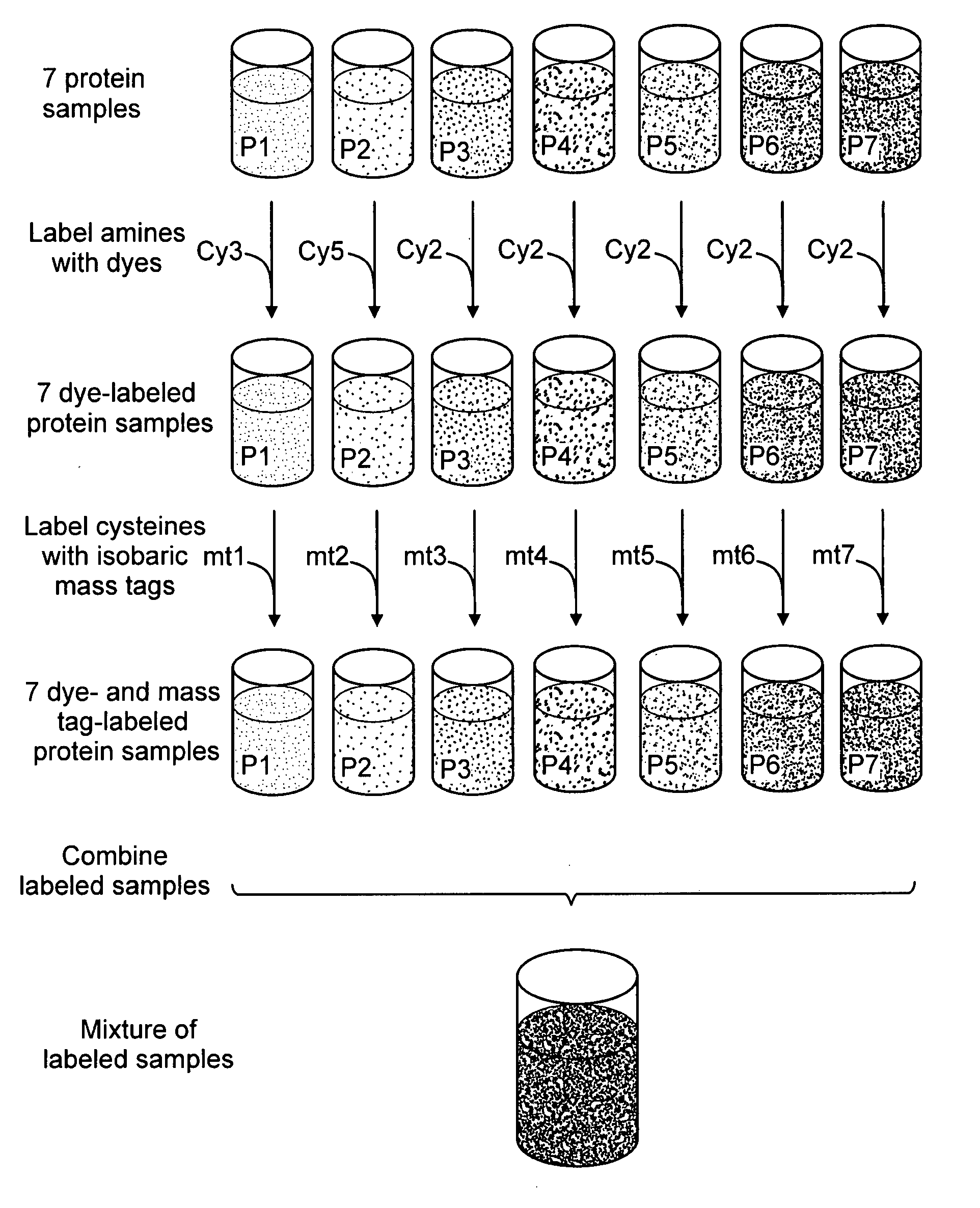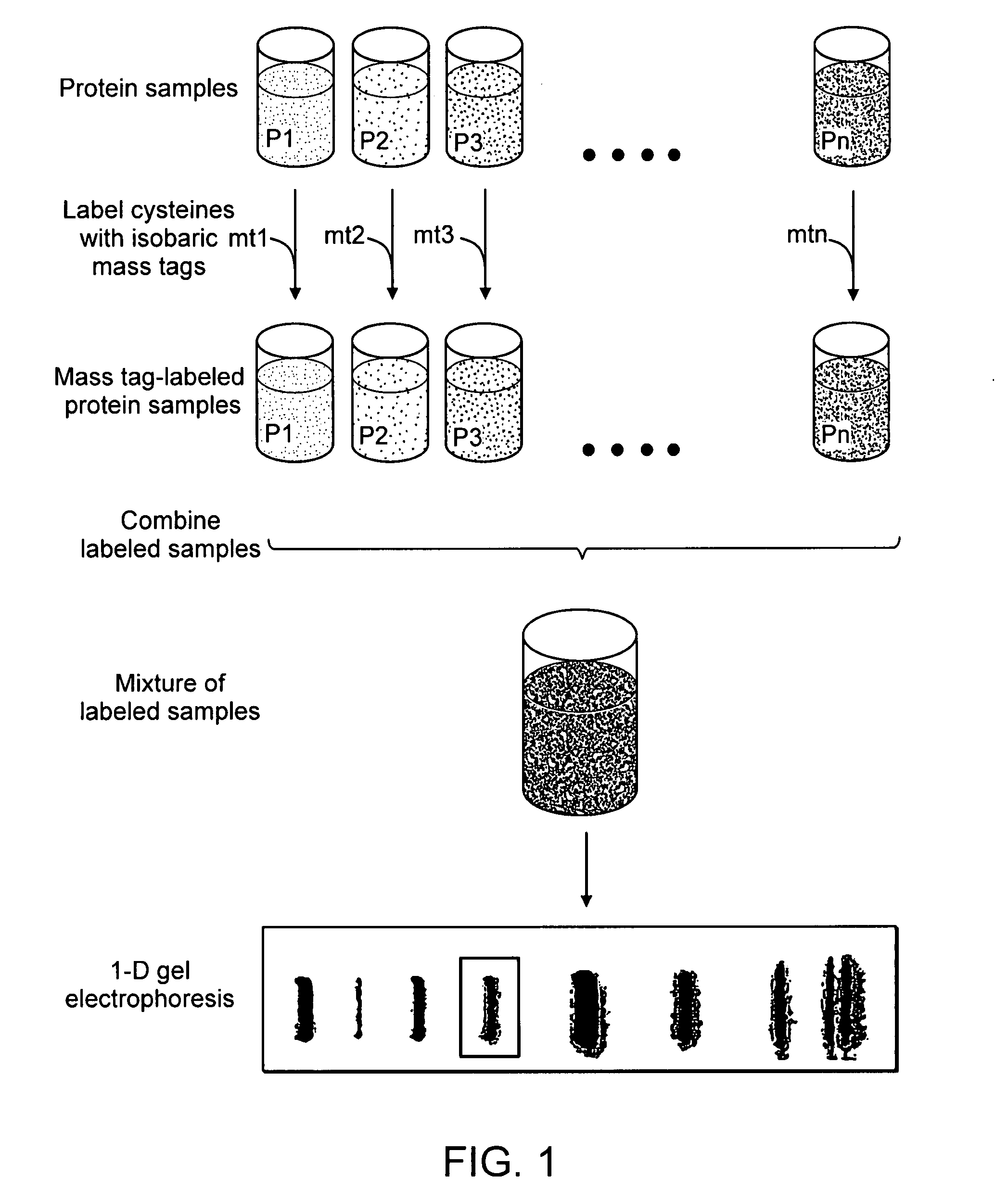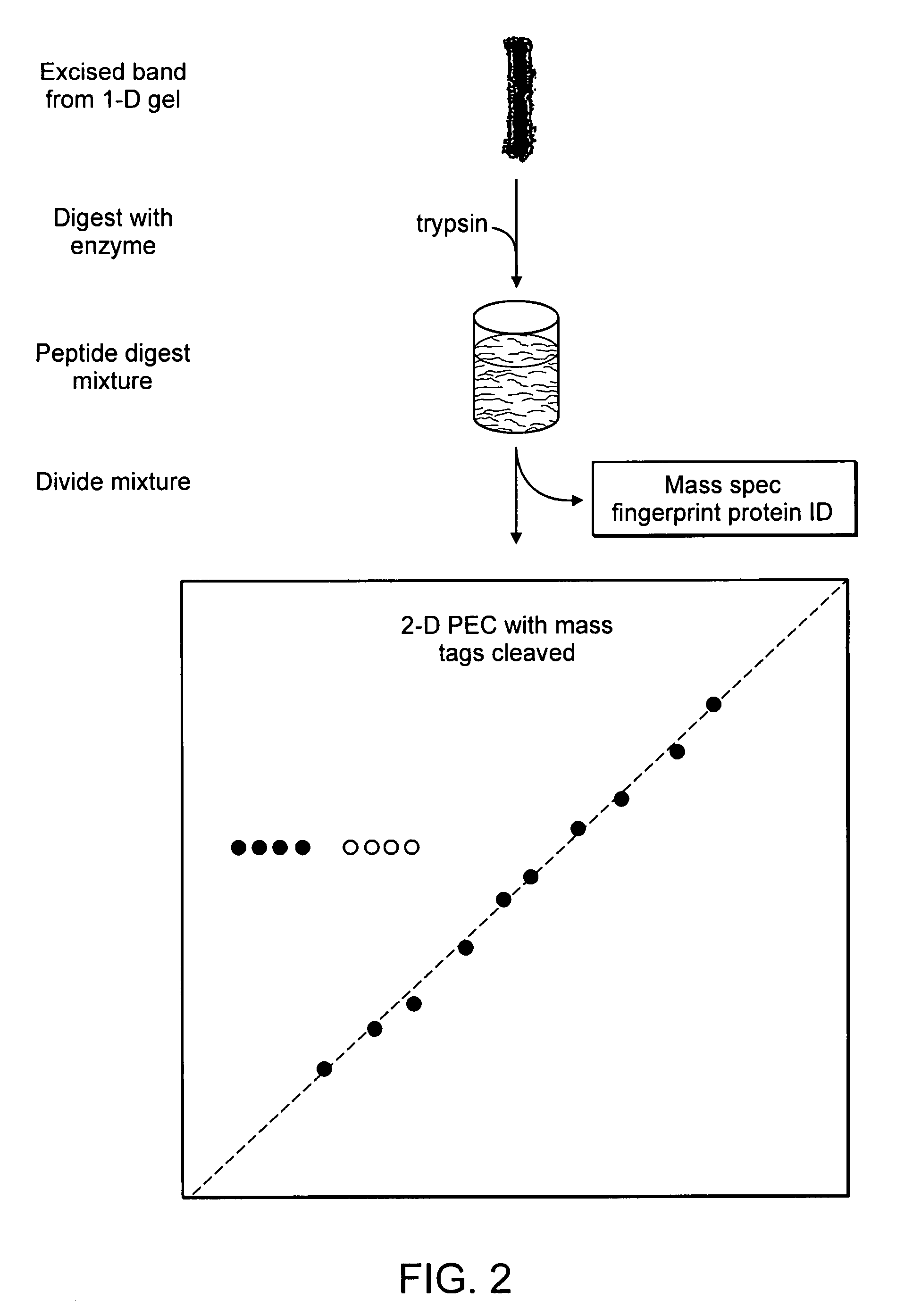Multiplexed analyte quantitation by two-dimensional planar electrochromatography
a planar electrochromatography and multi-dimensional technology, applied in the field of biochemistry and proteomics, can solve the problems of inability to analyze multiple samples simultaneously significantly affecting data quality and throughput speed, and the progress in the field of proteomics is limited
- Summary
- Abstract
- Description
- Claims
- Application Information
AI Technical Summary
Benefits of technology
Problems solved by technology
Method used
Image
Examples
example 1
Multiplex Assay with Isobaric Peptide Mass Tags
[0173] An exemplary workflow based upon the isobaric mass-tags, wherein analytes are proteins, is illustrated in FIGS. 1 and 2. As shown in FIG. 1, the samples are labeled with isobaric mass tags (mt1 . . . mtn), combined and proteins are then fractionated by one-dimensional (1-D) SDS-polyacrylamide gel electrophoresis. As shown in FIG. 2, one or more proteins or peptides of interest is selected from the electrophoretic profile, excised, proteolytically digested, for example with trypsin, and eluted from the gel slice by standard methods (e.g., Sambrook et al., Molecular Cloning: A Laboratory Manual, Cold Spring Harbor Laboratory Press; 3rd Ed. 2001, incorporated herein by reference in its entirety). A portion of the proteolytic digest can be used to identify the protein by peptide mass profiling or other standard identification techniques. The remainder of the eluted peptides is fractionated by a first dimension PEC, and the mobile ph...
example 2
Multiplex Assay with Isobaric Peptide Mass Tags in Combination with Difference Gel Electrophoresis
[0174] Though a variety of liquid chromatography / mass spectrometry-based approaches are gaining in prominence, proteomics still relies heavily upon the combination of 2-D gel electrophoresis and mass spectrometry. A typical 2D gel workflow in proteomics research would benefit from the described 2DPEC mass tagging approach. Seven protein samples, corresponding to seven different biological states, such as time-course or dose-response treatments with a drug, are labeled with different isobaric mass tags, the proteins are mixed together and the protein components are separated by 2D gel electrophoresis. After staining with a fluorescent dye, such as SYPRO Ruby protein gel stain (Molecular Probes / Invitrogen, Carlsbad, Calif.), an analytical imaging platform is employed to visualize the complex patterns generated by 2-D gel electrophoresis. Typically, after images are acquired, spot boundar...
example 3
Assay Using a Phos-tag™ Molecule as Mobility Modifier
Materials
[0178] One unphosphorylated peptide and three phosphopeptides were purchased from AnaSpec, Inc (San Jose, Calif.): IR (insulin receptor 1142-1153: TRDIYETDYYRK, catalog #24537), IR-2 (kinase domain of insulin receptor 2: TRDIpYETDYYRK, catalog #20292), IR-3 (kinase domain of insulin receptor 3: TRDIYETDpYYRK, catalog #20274), and IR-5 (kinase domain of insulin receptor 5: TRDIpYETDpYpYRK, catalog #20272). PIPES (piperazine-1,4-bis(2-ethanesulfonic acid), 1-butanol, pyridine, fluorescamine, and ZnCl2 were from Sigma (St. Louis, Mo.). A biotinylated Phos-tag™ molecule (1,3-bis[bis(pyridin-2-ylmethyl)amino]propan-2-olato) was provided by the NARD Institute (Amagasaki, Japan). TLC plastic plates (silica gel 60, 20×20 cm) were from EMD Chemicals Inc (Gibbstown, N.J.). Filter papers were from Whatman (Brentford, UK). A Hunter Thin Layer Electrophoresis system used for planar electrochromatography (PEC) peptide mapping was ob...
PUM
| Property | Measurement | Unit |
|---|---|---|
| gel electrophoresis | aaaaa | aaaaa |
| high performance liquid chromatography | aaaaa | aaaaa |
| fast protein liquid chromatography | aaaaa | aaaaa |
Abstract
Description
Claims
Application Information
 Login to View More
Login to View More - R&D
- Intellectual Property
- Life Sciences
- Materials
- Tech Scout
- Unparalleled Data Quality
- Higher Quality Content
- 60% Fewer Hallucinations
Browse by: Latest US Patents, China's latest patents, Technical Efficacy Thesaurus, Application Domain, Technology Topic, Popular Technical Reports.
© 2025 PatSnap. All rights reserved.Legal|Privacy policy|Modern Slavery Act Transparency Statement|Sitemap|About US| Contact US: help@patsnap.com



